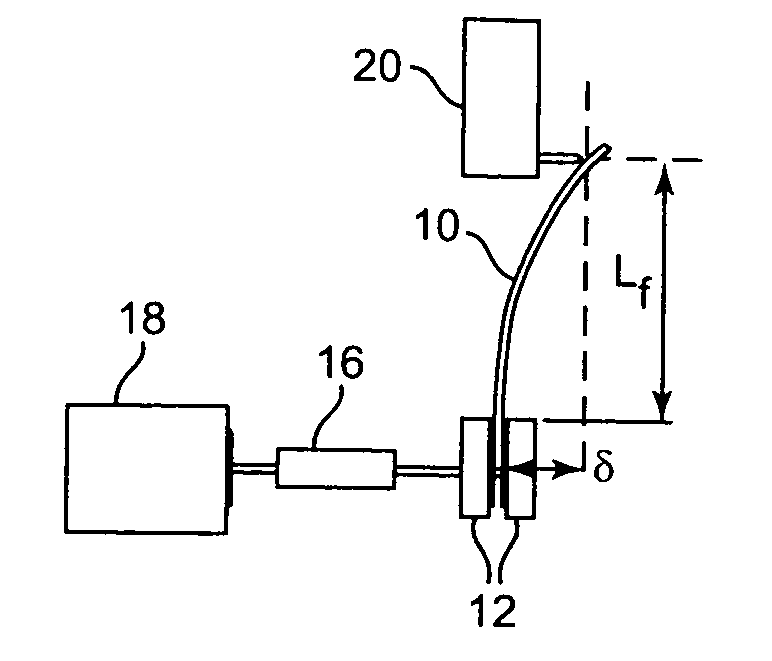Ionic solvents used in ionic polymer transducers, sensors and actuators
- Summary
- Abstract
- Description
- Claims
- Application Information
AI Technical Summary
Benefits of technology
Problems solved by technology
Method used
Image
Examples
example 1
[0056] The five ionic liquids used in the current study are comprised of substituted phoshonium or pyrrolidinuim cations and either the bis(trifluoromethylsulfonyl)imide anion or the tris(pentafluoroethyl)trifluorophosphate anion. Also studied was the more common 1-ethyl-3-methylimidazolium cation with the trifluoromethanesulfonate (triflate) anion. A listing of these ionic liquids and their identification numbers to be used in this paper are given in Table 1.
TABLE 1ID #Ionic Liquid1trihexyl(tetradecyl)phosphonium bis(trifluoromethylsulfonyl)imide2trihexyl(tetradecyl)phosphoniumtris(pentafluoroethyl)trifluorophosphate31-butyl-1-methyl-pyrrolidinium bis(trifluoromethylsulfonyl)imide41-butyl-1-methyl-pyrrolidiniumtris(pentafluoroethyl)trifluorophosphate51-ethyl-3-methyl-imadazolium trifluoromethanesulfonate
These five ionic liquids were studied for their ability to swell the plated perfluorosulfonic acid (e.g., Nafion™) membrane by monitoring the weight uptake and Young's modulus of...
example 2
[0071] In order to overcome the problem of dehydration and electrode stability, a new method for fabricating ionic transducers, sensors and / or actuators has been developed that combines the use of ionic liquids and metal powder painted electrodes in the same device. In this method, a bare ionic polymer membrane, such as a Nafion membrane, is first exchanged from the proton counterion form into one of the alkali metal (e.g., Na+, Li+) forms. This is to prevent charring of the membrane during the drying step, which has been witnessed when Nafion membranes in the acid form are heated for extended periods of time. After ion exchange, the membrane is dried in an oven at 150° C. under vacuum for 12 hours. The dry membrane is then immersed in neat 1-ethyl-3-methyimidazolium trifluoromethanesulfonate (EmI-Tf) ionic liquid and heated to 150° C. for 4.5 hours. The uptake of ionic liquid during the immersion step is 60% by the dry weight of the membrane.
[0072] After the ionic liquid has been ...
PUM
 Login to View More
Login to View More Abstract
Description
Claims
Application Information
 Login to View More
Login to View More - R&D
- Intellectual Property
- Life Sciences
- Materials
- Tech Scout
- Unparalleled Data Quality
- Higher Quality Content
- 60% Fewer Hallucinations
Browse by: Latest US Patents, China's latest patents, Technical Efficacy Thesaurus, Application Domain, Technology Topic, Popular Technical Reports.
© 2025 PatSnap. All rights reserved.Legal|Privacy policy|Modern Slavery Act Transparency Statement|Sitemap|About US| Contact US: help@patsnap.com



